Deserts are often seen as barren, lifeless places, but they are also home to some of the most mysterious and unexplained phenomena on Earth. From strange lights and moving rocks to ancient geoglyphs and puzzling formations, these vast landscapes are full of secrets that continue to baffle scientists and intrigue explorers. The harsh, remote environments of deserts make them ideal settings for enigmatic occurrences that defy easy explanation. In this article, we’ll delve into the top 16 mysterious desert landscapes, uncovering the unexplained phenomena that make these places so captivating and eerie.
Racetrack Playa, USA
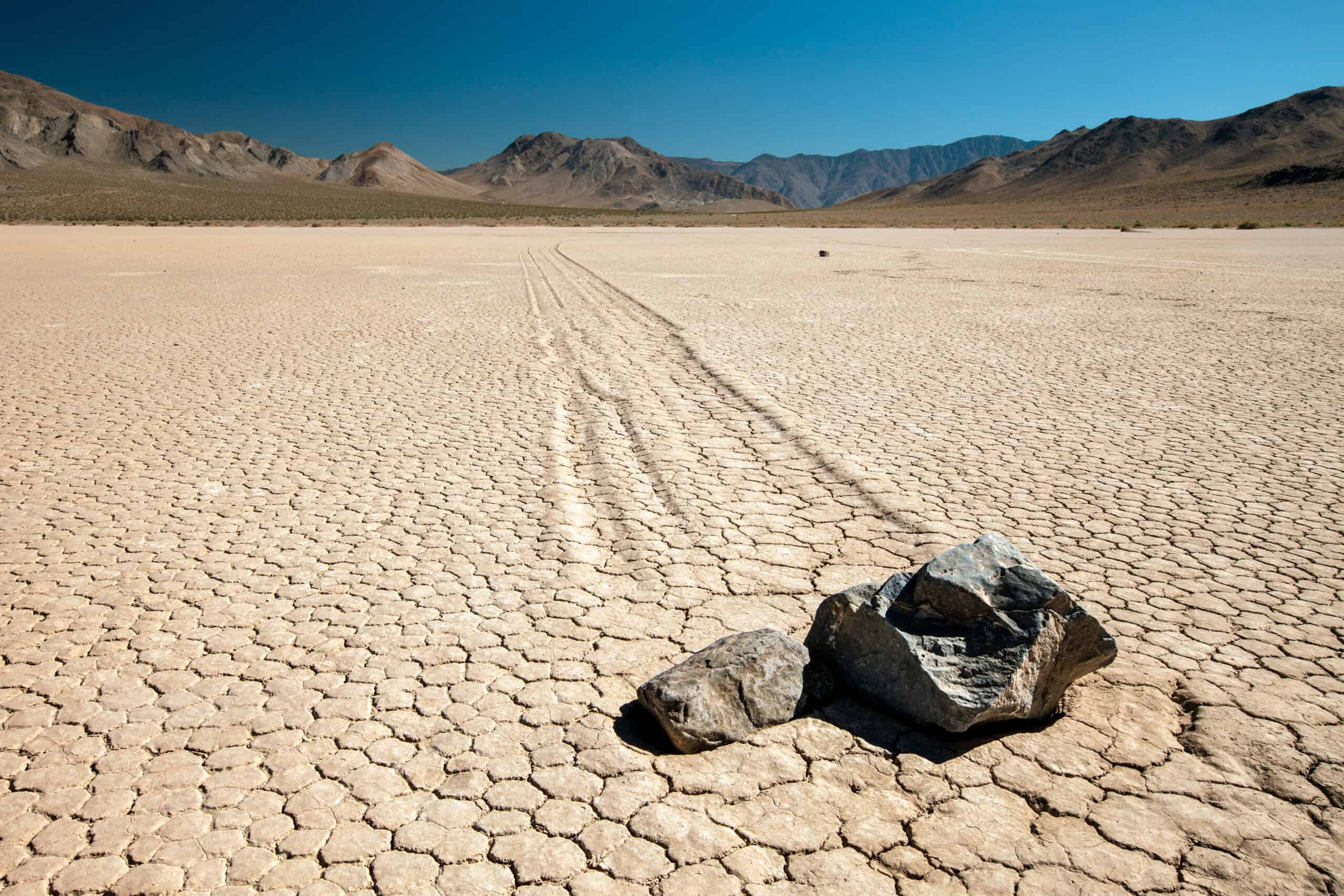
Racetrack Playa, located in Death Valley National Park, California, is renowned for its mysterious moving stones that have puzzled scientists and visitors alike. These stones, some weighing several hundred pounds, seem to move on their own across the flat, dry lakebed, leaving long trails behind them. The movement of these rocks was a mystery for decades, leading to various theories ranging from powerful winds and ice sheets to more outlandish ideas like magnetic fields or even alien intervention. In recent years, researchers have determined that the stones move when a rare combination of rain, freezing temperatures, and light wind conditions create a thin layer of ice on the playa. As the ice melts, it breaks into panels that push the rocks along the slippery surface, leaving behind the characteristic trails. Despite this explanation, the rarity of the conditions and the mysterious aura of the site continue to captivate the imagination, making Racetrack Playa one of the most intriguing and mysterious desert landscapes on Earth.
Nazca Lines, Peru
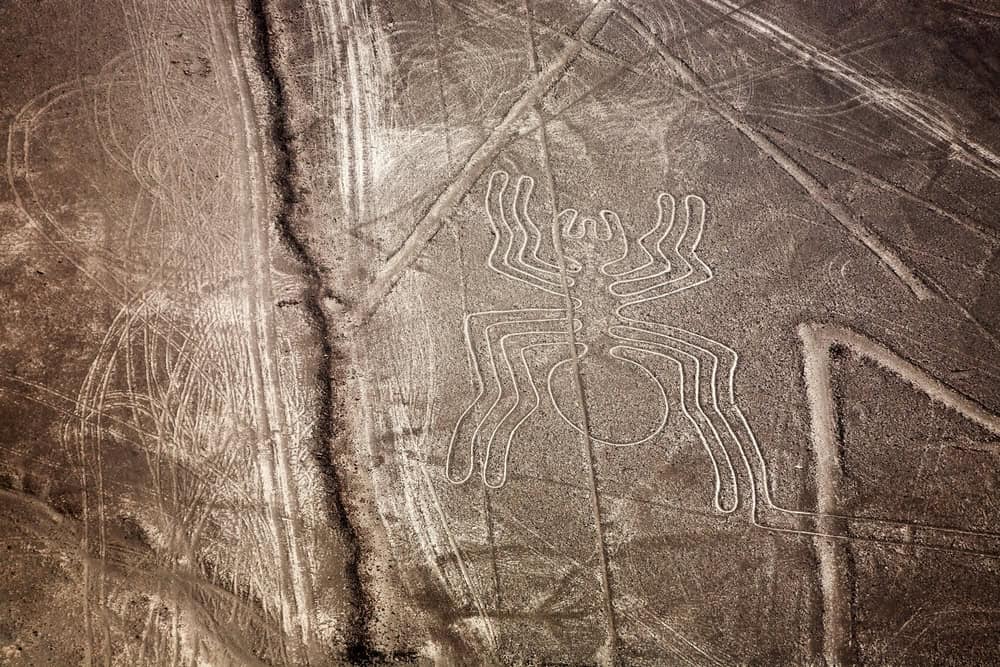
The Nazca Lines are one of the most iconic and mysterious desert landscapes in the world. Etched into the arid plains of southern Peru, these ancient geoglyphs, created by the Nazca culture between 500 BCE and 500 CE, depict a variety of figures, including animals, plants, and geometric shapes. The lines cover an area of nearly 170 square miles, and some of the figures are as large as 1,200 feet across, making them best viewed from the air. Despite extensive study, the purpose of the Nazca Lines remains a mystery. Some theories suggest they were used as astronomical calendars, while others propose they were part of religious or ceremonial rituals. The precision and scale of these drawings have led to speculations about their creation, with some even suggesting extraterrestrial involvement. The Nazca Lines continue to fascinate both scientists and tourists, drawing visitors from around the world who seek to unravel the mystery behind these ancient desert artworks.
Fairy Circles, Namibia
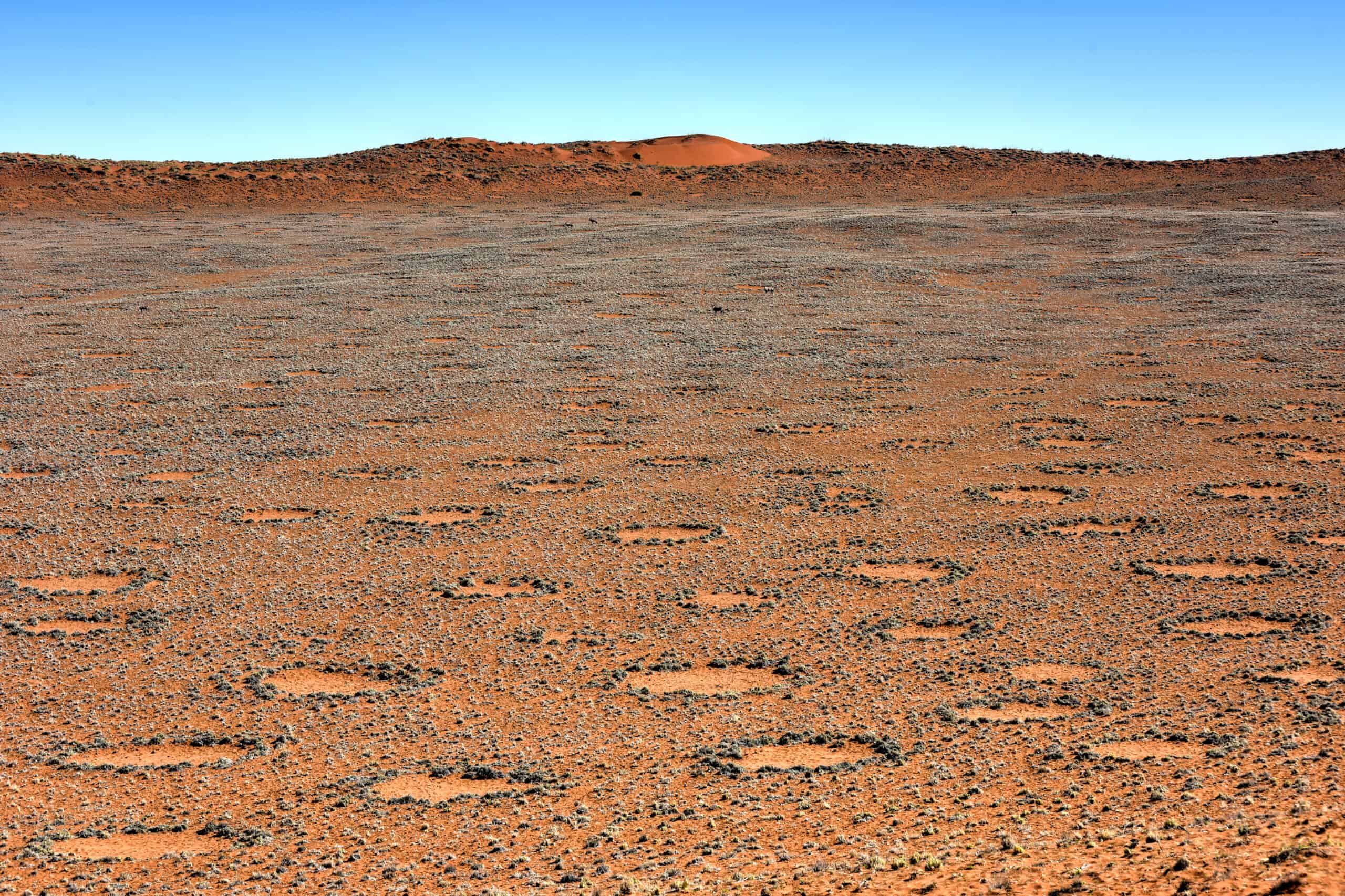
The Fairy Circles of Namibia are one of the most enigmatic natural phenomena found in desert landscapes. These circular patches of barren land, ranging from 2 to 15 meters in diameter, are surrounded by rings of lush grass and are spread across the Namib Desert in a honeycomb-like pattern that stretches for miles. The origin of these circles has been a subject of debate among scientists for decades. Some theories suggest they are caused by termite activity, where the insects clear vegetation to create a moisture reservoir. Others propose that the circles result from self-organizing vegetation patterns due to competition for water in the arid environment. Despite numerous studies, there is no consensus on a definitive explanation, and the circles remain a mystery. The otherworldly appearance of the Fairy Circles, combined with their unexplained origin, makes them a captivating and mysterious feature of the Namib Desert, drawing researchers and tourists alike to ponder their existence.
The Eye of the Sahara, Mauritania
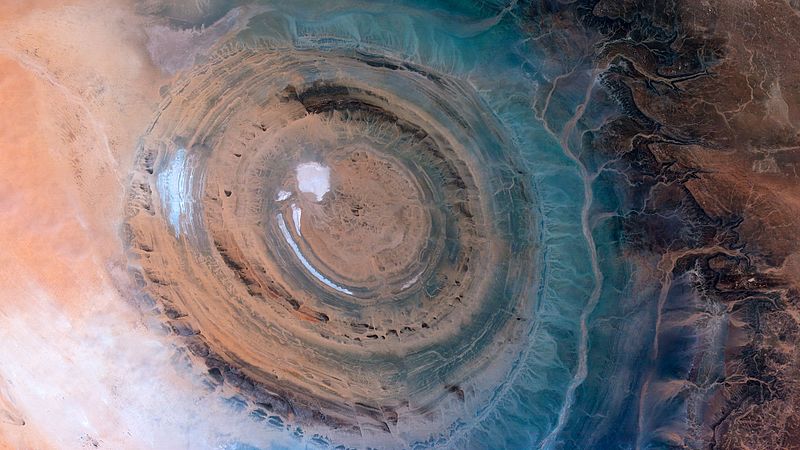
The Eye of the Sahara, also known as the Richat Structure, is a massive circular geological formation located in the Sahara Desert in Mauritania. Spanning approximately 40 kilometers in diameter, this natural wonder is so large that it is visible from space, resembling a giant bullseye in the desert. Initially believed to be the result of a meteorite impact, it is now thought to have formed through a process of uplift and erosion over millions of years, though the exact mechanisms remain unclear. The concentric rings of the structure reveal layers of sedimentary rock that have been exposed over time, creating a striking visual effect. Despite being one of the most studied geological features in the world, the Eye of the Sahara continues to intrigue scientists, as its precise formation process is still a matter of debate. Its unique appearance and the mystery surrounding its origin make the Eye of the Sahara one of the most fascinating and enigmatic desert landscapes on the planet.
Valle de la Luna, Chile
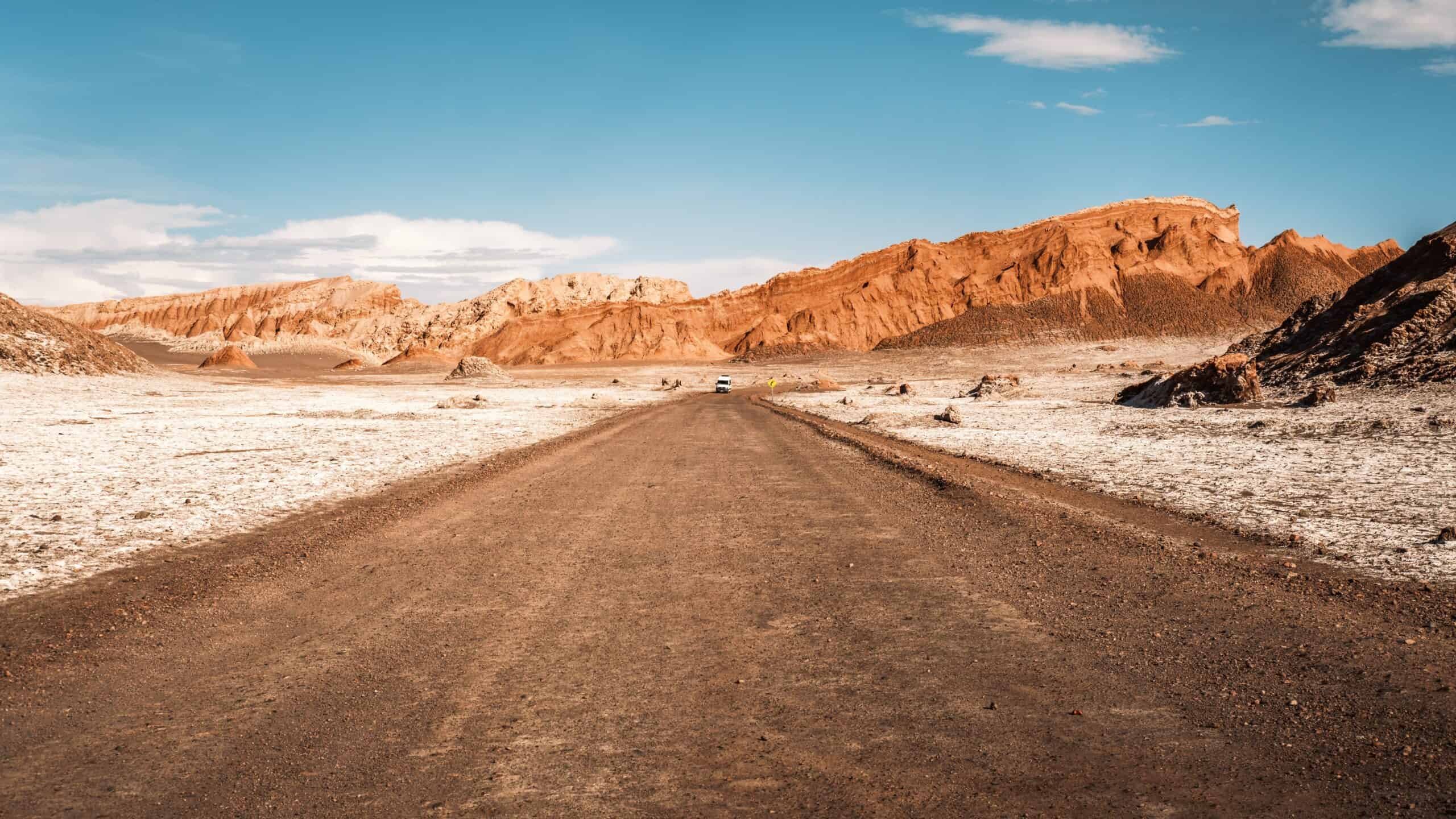
Valle de la Luna, or the Valley of the Moon, is located in the Atacama Desert of northern Chile, one of the driest places on Earth. This surreal landscape is characterized by its rugged terrain, composed of salt flats, sand dunes, and jagged rock formations, all shaped by wind and water erosion over millennia. The valley’s name comes from its resemblance to the surface of the moon, with its stark, otherworldly appearance. The area is particularly stunning at sunrise and sunset, when the low angle of the sun casts long shadows and enhances the colors of the rocks and sand, creating an almost alien landscape. The unique geological features of Valle de la Luna, combined with its extreme aridity, make it a popular destination for scientists studying Mars-like environments and for tourists seeking to experience one of the most mysterious and beautiful desert landscapes in the world. The valley’s eerie silence and otherworldly beauty contribute to its reputation as a place of mystery and wonder.
Deadvlei, Namibia
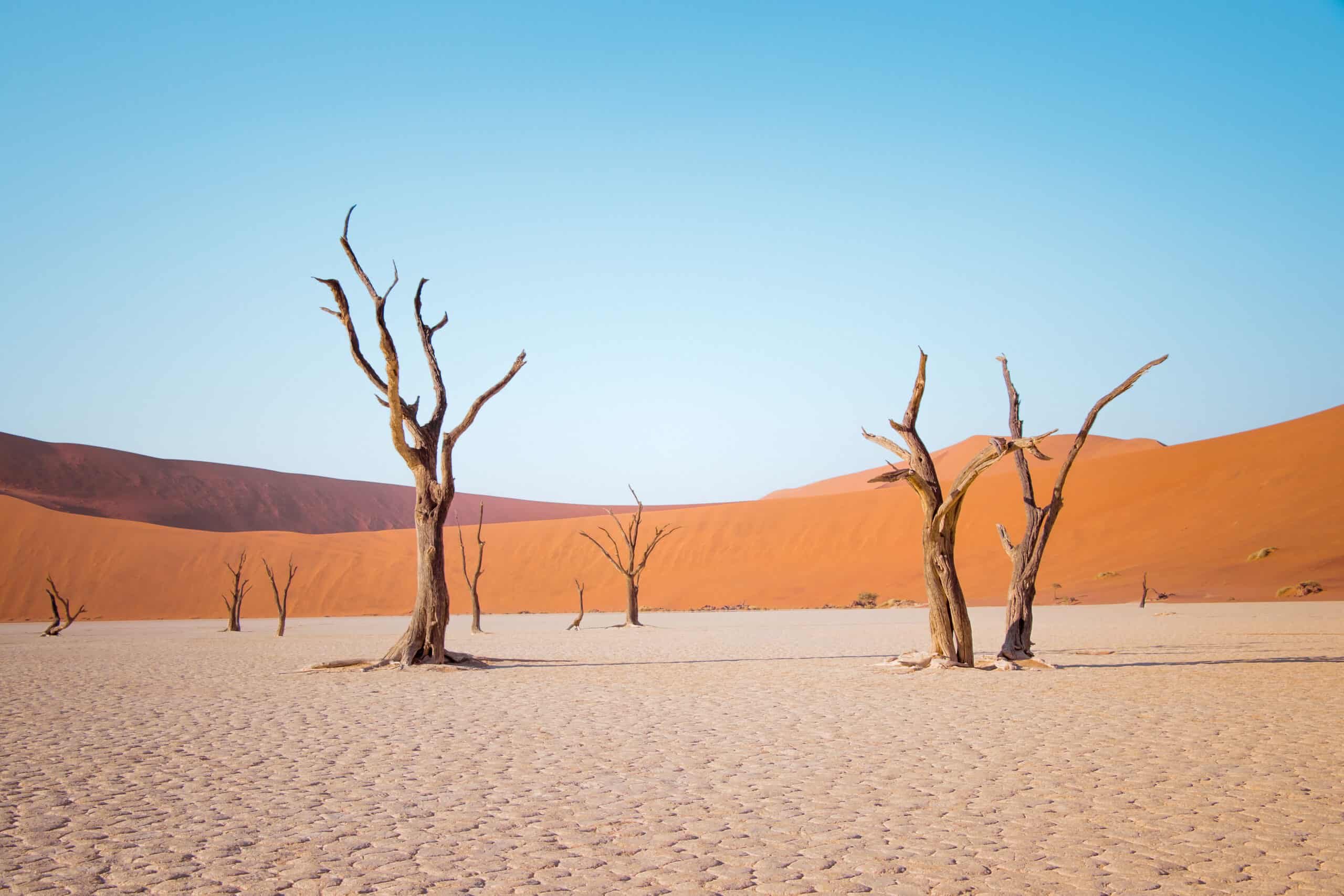
Deadvlei, located in the Namib Desert, is a strikingly surreal landscape that captivates all who visit. This white clay pan is surrounded by some of the tallest sand dunes in the world, reaching heights of up to 300 meters. The pan itself is dotted with the skeletal remains of ancient camel thorn trees, which have been dead for over 900 years. These trees have not decomposed due to the extreme aridity of the environment, instead, they stand as blackened sentinels against the stark white clay and the vibrant red dunes. The contrast between the dark, twisted trees and the bright, barren landscape creates an otherworldly scene that has been described as both haunting and beautiful. Deadvlei’s unique and enigmatic appearance, combined with its isolation in one of the most remote parts of the world, makes it a truly mysterious desert landscape. Photographers and adventurers are drawn to Deadvlei to capture its eerie beauty and to ponder the harsh forces of nature that created this desolate yet captivating place.
Skeleton Coast, Namibia
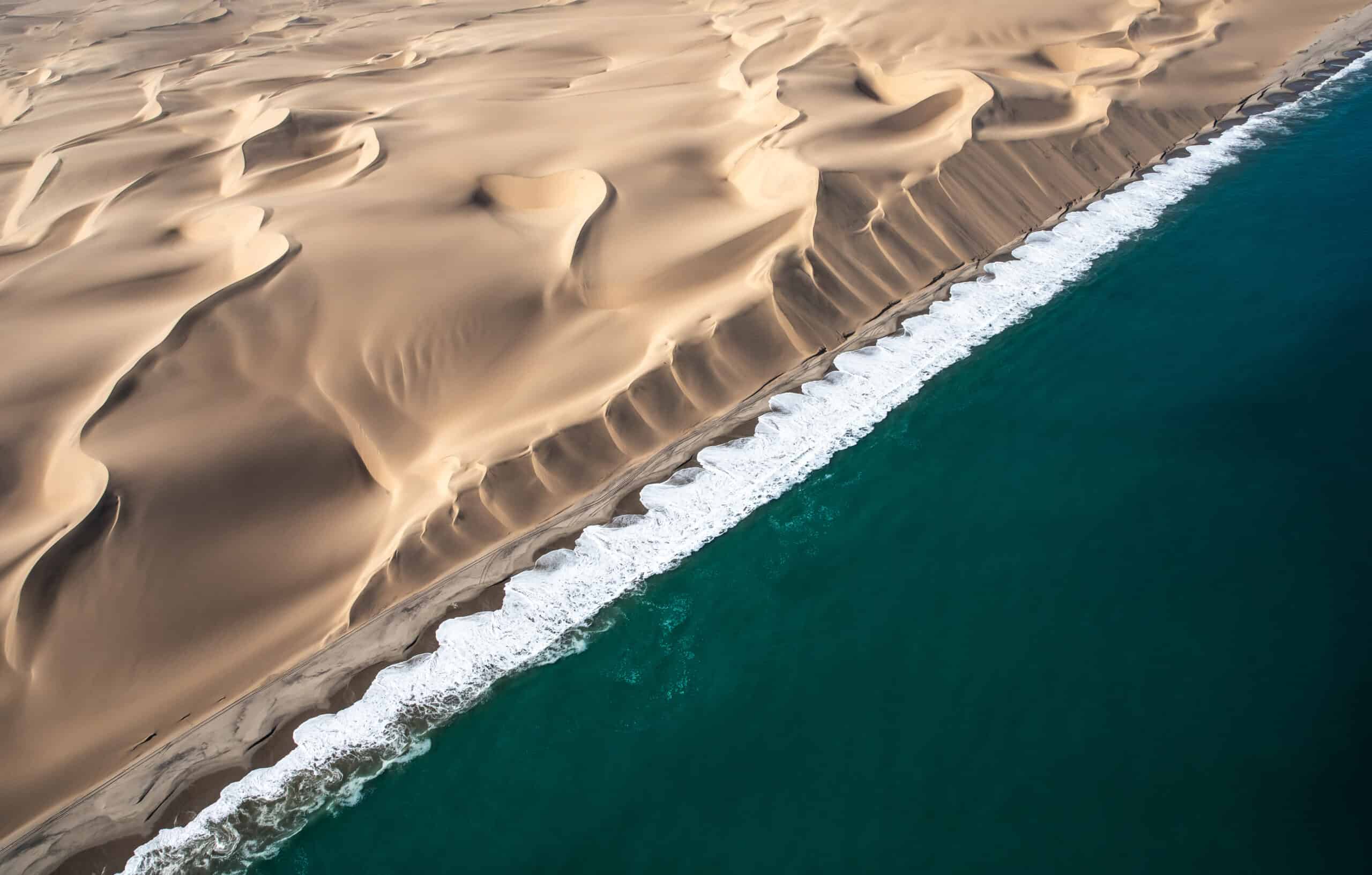
The Skeleton Coast in Namibia is one of the most desolate and mysterious coastal deserts in the world. Stretching along the Atlantic Ocean, it is named for the countless shipwrecks that litter its shores, the result of dense fog, strong currents, and treacherous seas. The coast is also home to the remains of whale bones and other marine life, further contributing to its eerie name. Despite its harsh and inhospitable environment, the Skeleton Coast is teeming with life, including desert-adapted elephants, lions, and seals. The juxtaposition of life and death, with the decaying remains of ships and animals scattered across the barren landscape, creates a hauntingly beautiful scene. The coast’s isolation and the mystery surrounding the many shipwrecks that have occurred there have given rise to numerous legends and stories, adding to its allure. The Skeleton Coast is a place where the relentless forces of nature are on full display, making it one of the most mysterious and captivating desert landscapes in the world.
Geysers del Tatio, Chile
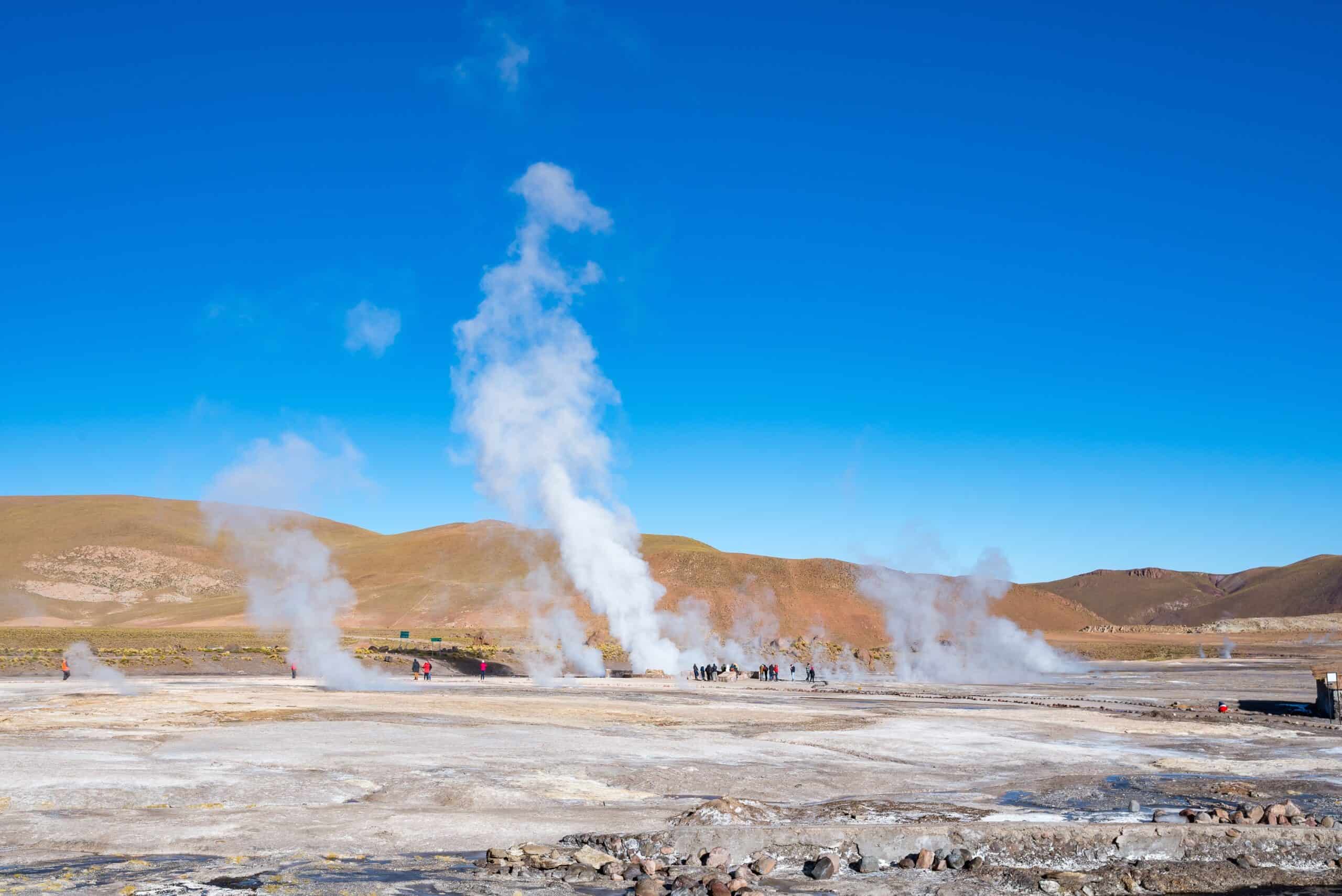
Geysers del Tatio is a geothermal field located in the Atacama Desert of northern Chile, at an altitude of over 14,000 feet. It is the largest geyser field in the southern hemisphere and the third-largest in the world, containing over 80 active geysers that emit steam and boiling water. The sight of these geysers erupting in the early morning light, with the cold air intensifying the steam plumes, creates an ethereal and otherworldly atmosphere. The extreme conditions of the high-altitude desert, combined with the geothermal activity, make Geysers del Tatio a place of scientific interest and a popular destination for tourists. Despite its popularity, the area retains an air of mystery, as the exact mechanisms that drive the geysers are still not fully understood. The dramatic landscape, with its steaming vents and bubbling pools, combined with the thin, crisp air of the high desert, makes Geysers del Tatio one of the most enigmatic and captivating desert landscapes on Earth.
Erg Chebbi, Morocco
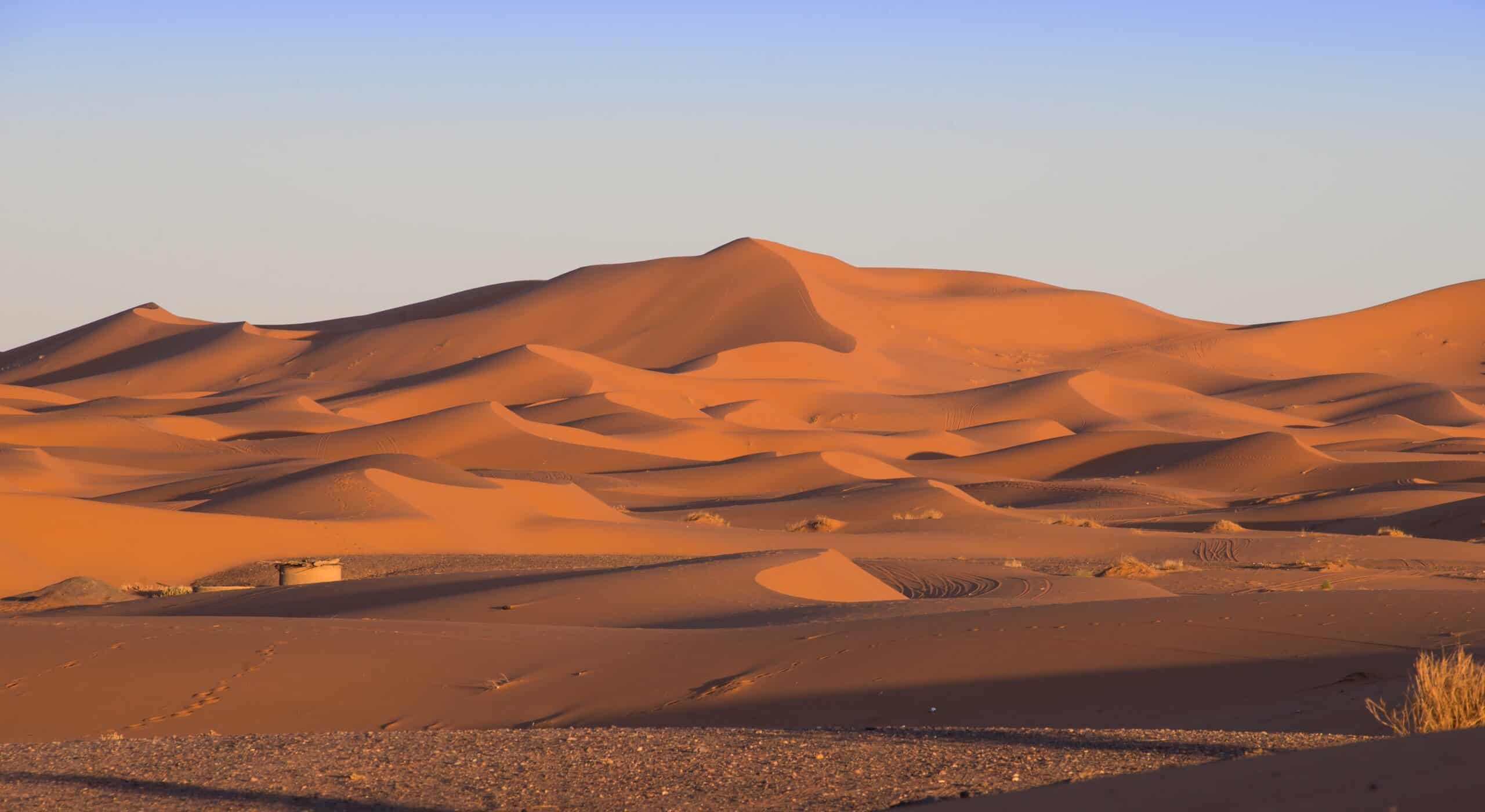
Erg Chebbi, located in the Moroccan Sahara near the town of Merzouga, is one of the most famous sand dune fields in the world. These golden dunes, some of which reach heights of 150 meters, stretch over 30 kilometers and offer a quintessential desert experience. The vast expanse of sand, with its constantly shifting shapes and patterns, creates a landscape that is both mesmerizing and mysterious. One of the most intriguing phenomena associated with Erg Chebbi is the “singing sand,” a natural occurrence where the sand grains vibrate and produce a low, humming sound as they shift in the wind. This acoustic wonder has been a source of fascination for centuries and adds to the mystical atmosphere of the dunes. Visitors to Erg Chebbi can explore the dunes on camelback, camp under the stars, and experience the serene beauty and mystery of the Sahara Desert. The combination of stunning natural beauty and unexplained phenomena makes Erg Chebbi a must-visit destination for those seeking the mysteries of the desert.
The Painted Desert, USA
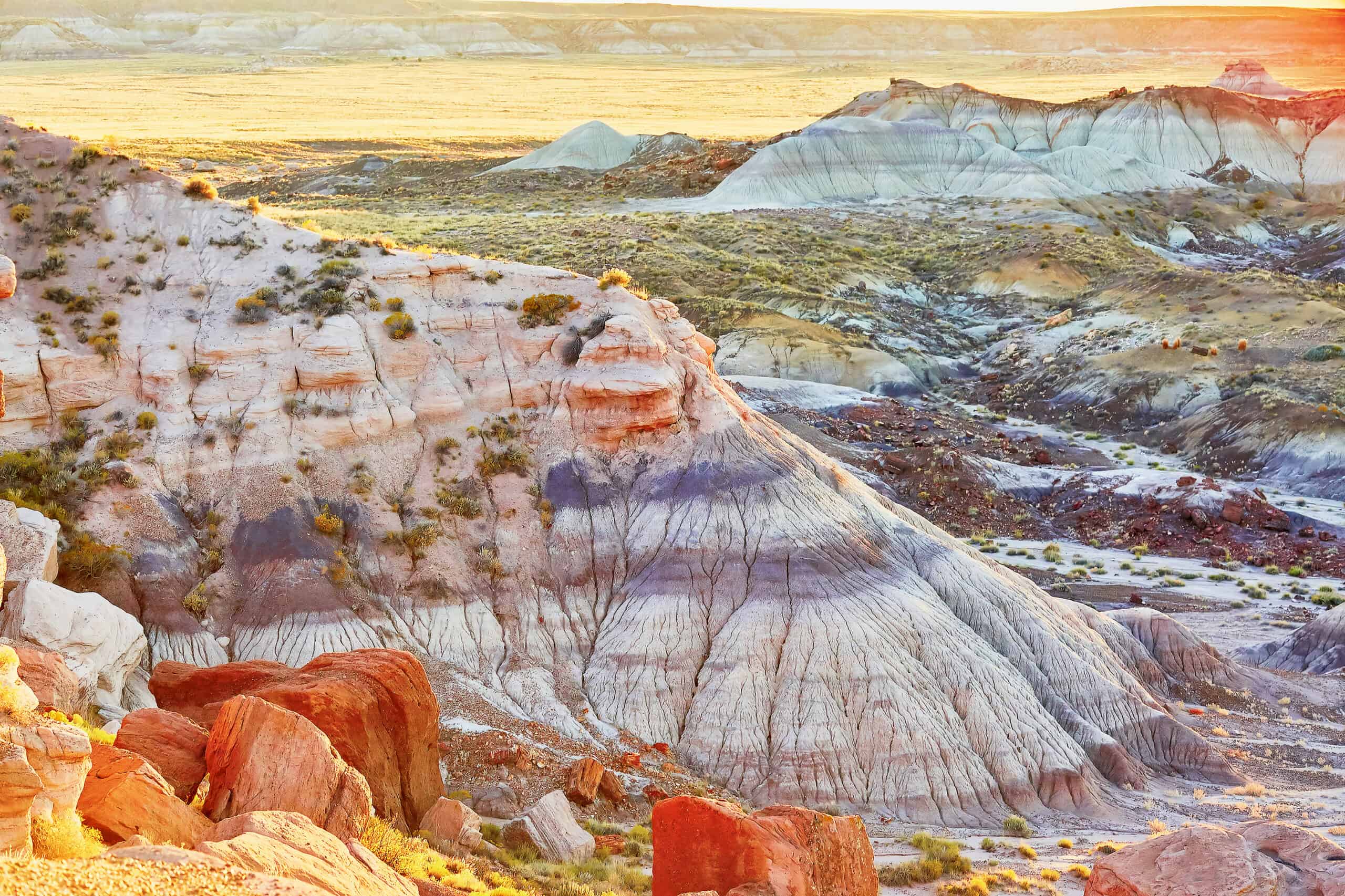
The Painted Desert, located in northeastern Arizona, is a desert badlands renowned for its stunning array of colors. The landscape is composed of stratified layers of sedimentary rock rich in iron and manganese compounds, which create hues ranging from deep red and orange to purple, pink, and blue. The colors change throughout the day as the angle of the sun shifts, creating a dynamic and ever-changing landscape. In addition to its vibrant colors, the Painted Desert is also home to ancient petrified wood, remnants of a prehistoric forest that has been turned to stone over millions of years. The area is steeped in history, with numerous Native American petroglyphs and ruins scattered throughout the desert. The combination of natural beauty, geological significance, and cultural history makes the Painted Desert a place of mystery and wonder. Visitors are drawn to the Painted Desert not only for its striking colors but also for the sense of connection to the ancient past that it evokes.
Khongoryn Els, Mongolia

Khongoryn Els, also known as the “Singing Sand Dunes,” is a remarkable desert landscape located in the Gobi Desert of Mongolia. These dunes stretch for over 100 kilometers and can reach heights of nearly 300 meters, making them some of the largest sand dunes in the world. The dunes are known for the unique phenomenon of “singing sands,” where the movement of the sand creates a deep, resonant sound that can be heard for miles. This natural acoustic effect has been a source of wonder for centuries and adds to the mystical atmosphere of the desert. The Khongoryn Els dunes are also home to a variety of desert wildlife, including camels, gazelles, and lizards, and the area is rich in paleontological significance, with numerous dinosaur fossils having been discovered nearby. The combination of natural beauty, ancient history, and mysterious phenomena makes Khongoryn Els a captivating destination for those seeking to explore the mysteries of the desert.
Badwater Basin, USA
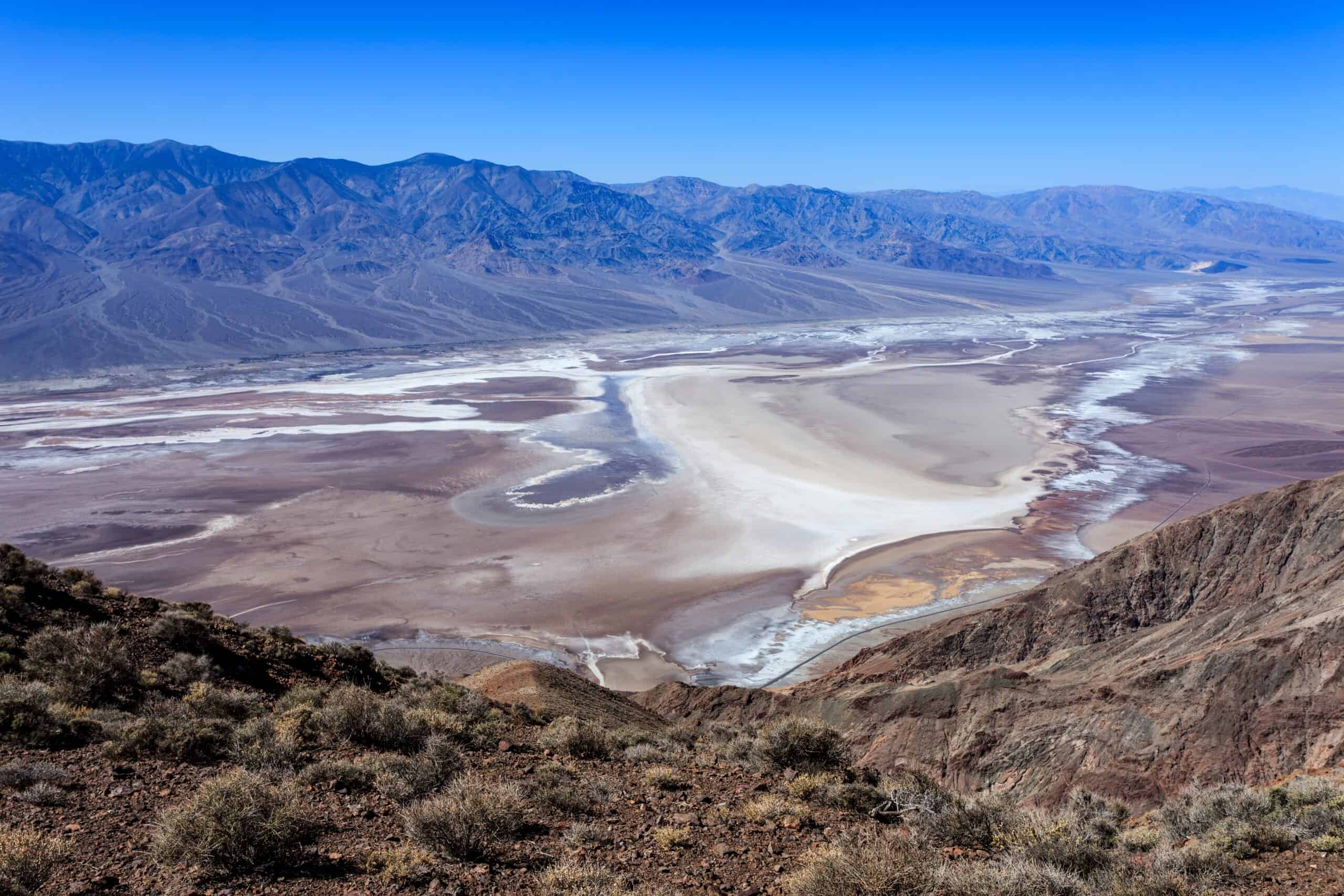
Badwater Basin, located in Death Valley National Park, California, is the lowest point in North America, sitting at 282 feet below sea level. This vast salt flat stretches for over 200 square miles and is one of the hottest and driest places on Earth. The basin is covered in a thick layer of salt, which creates a surreal, otherworldly landscape that seems to stretch endlessly into the horizon. The salt flats are constantly shifting and changing due to the extreme temperatures and evaporation rates, creating intricate patterns and formations that are both beautiful and mysterious. Despite its harsh conditions, Badwater Basin is home to a variety of unique and resilient plant and animal species, including salt-tolerant bacteria and tiny brine shrimp that thrive in the ephemeral pools that form after rare rainstorms. The stark beauty and extreme environment of Badwater Basin make it one of the most enigmatic and captivating desert landscapes in the world, attracting visitors who seek to experience the mystery and wonder of this unique place.
Great Pyramid of Giza, Egypt
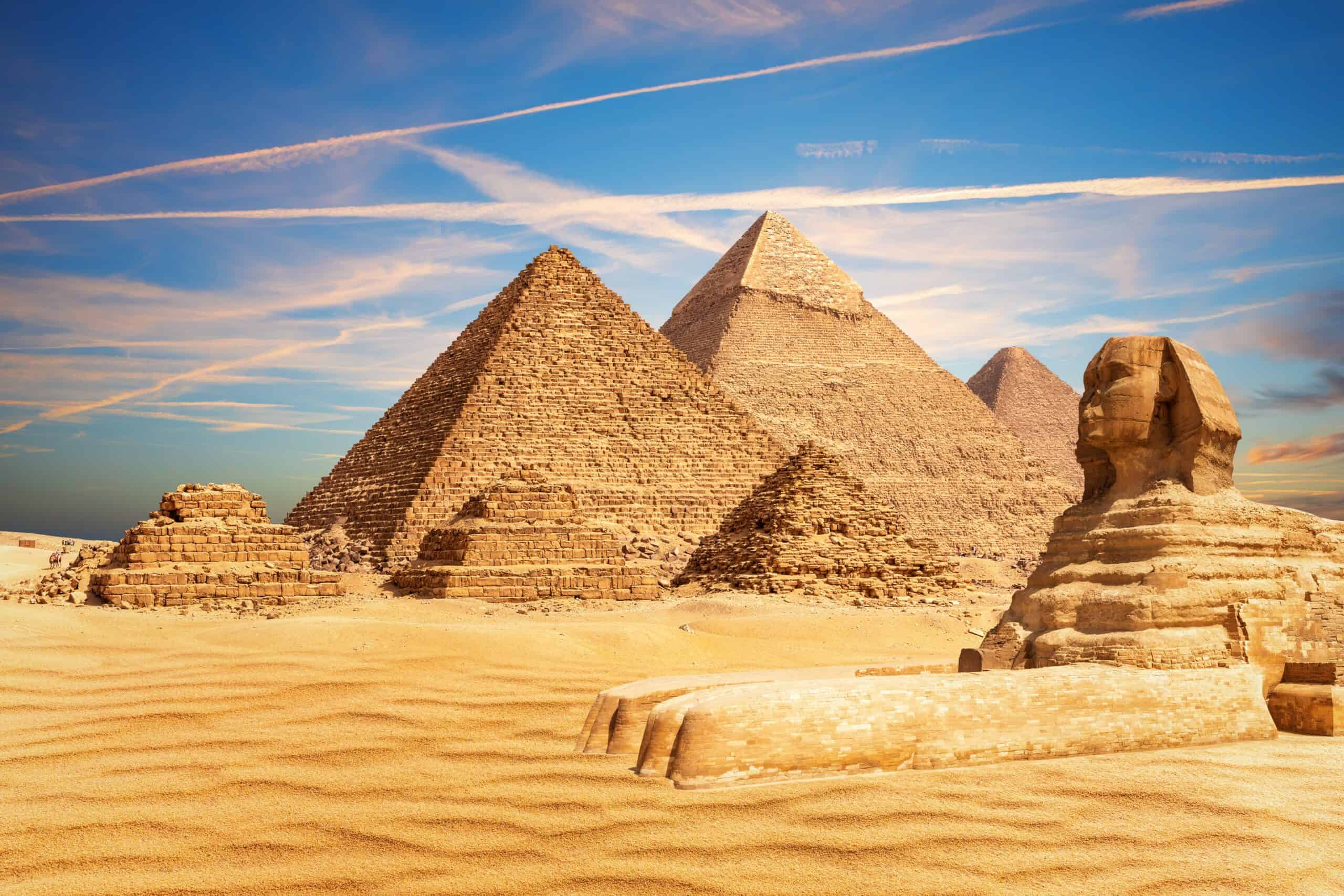
The Great Pyramid of Giza, located on the edge of the Egyptian desert, is one of the most famous and enigmatic structures in the world. Built over 4,500 years ago as a tomb for the Pharaoh Khufu, the pyramid is a marvel of ancient engineering, with its massive stone blocks and precise alignment to the cardinal points of the compass. Despite extensive study, many questions remain about how the pyramid was constructed, with theories ranging from the use of ramps and pulleys to more speculative ideas involving advanced technologies or even extraterrestrial assistance. The interior of the pyramid is equally mysterious, with hidden chambers, narrow passageways, and a central burial chamber that has yet to reveal all its secrets. The Great Pyramid’s enduring mystery and the possibility of undiscovered chambers or artifacts continue to captivate archaeologists and tourists alike, making it one of the most fascinating and mysterious desert landscapes in the world.
The Atacama Desert, Chile
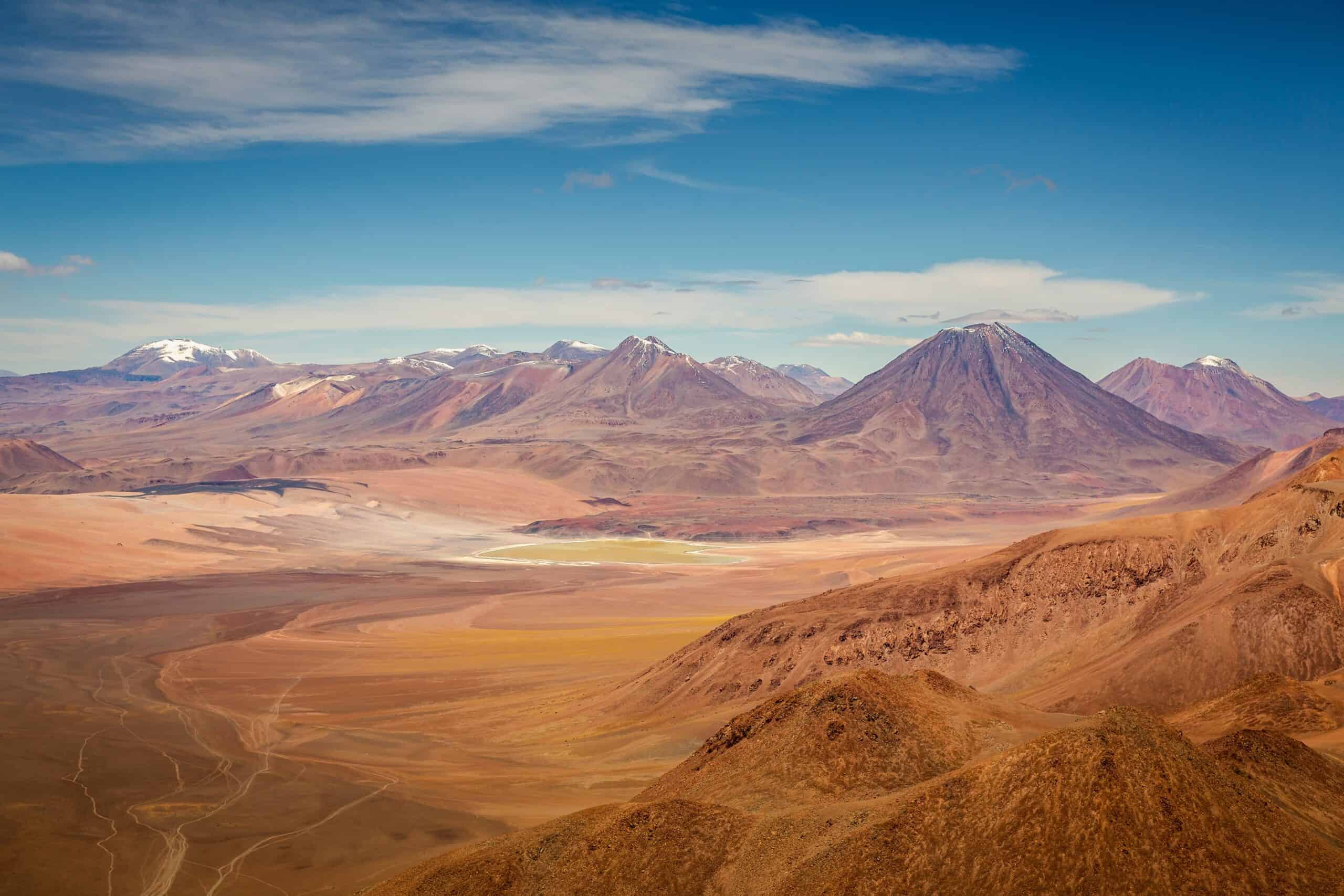
The Atacama Desert in northern Chile is one of the driest places on Earth, with some areas receiving no rainfall for decades. Despite its extreme aridity, the Atacama is a place of incredible beauty and mystery, with its vast salt flats, towering volcanoes, and surreal landscapes that seem to belong to another world. One of the most mysterious features of the Atacama is its unique soil composition, which closely resembles that of Mars, making it a prime location for astrobiological research. The desert is also home to ancient petroglyphs and geoglyphs, including the famous “Atacama Giant,” a massive figure carved into the hillside that has puzzled archaeologists for years. The combination of extreme conditions, striking landscapes, and unexplained phenomena makes the Atacama Desert a place of wonder and intrigue, attracting scientists, explorers, and tourists who seek to uncover the mysteries of this otherworldly desert.
The Namib Desert, Namibia
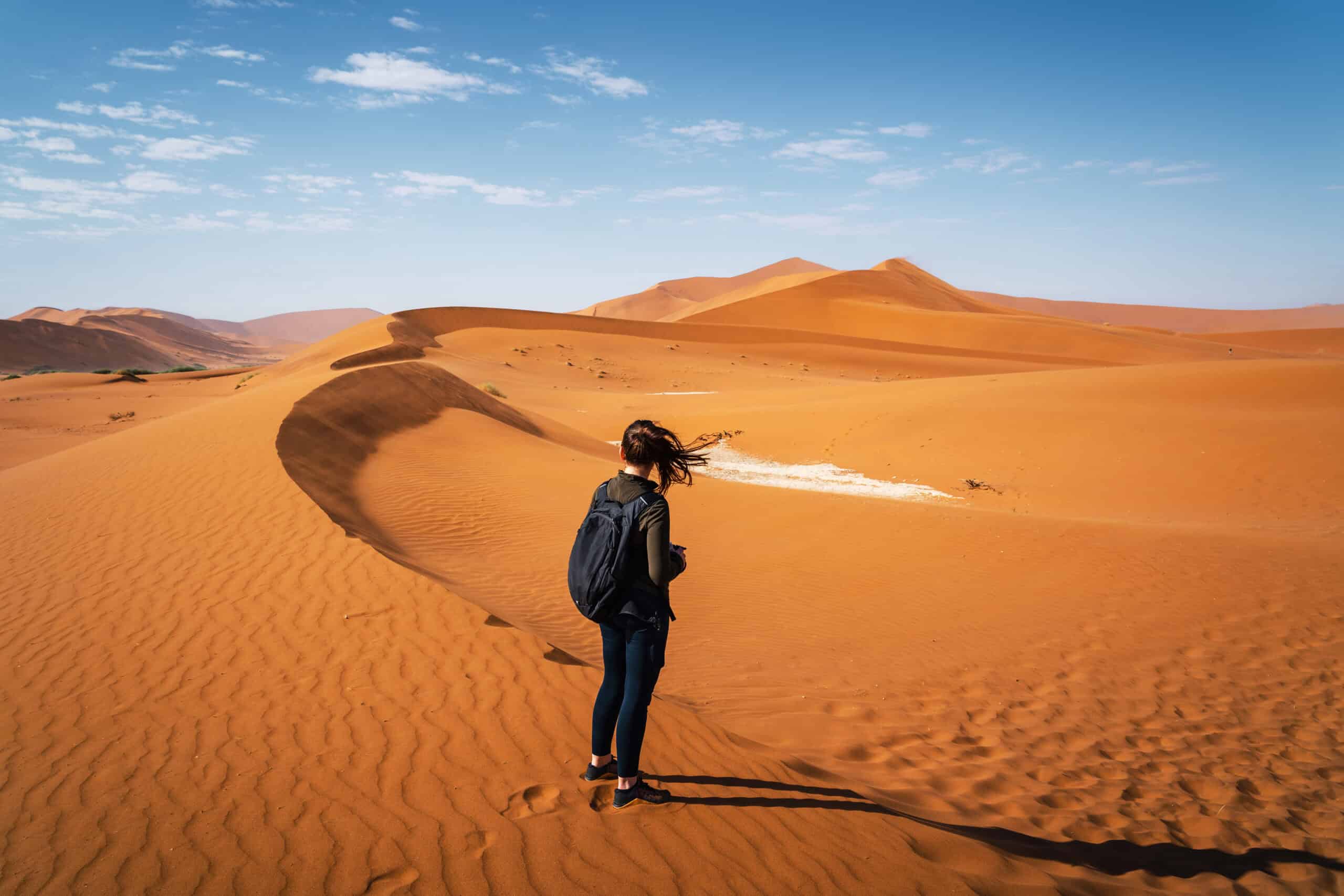
The Namib Desert is one of the oldest and most mysterious deserts in the world, with a history that dates back over 55 million years. Stretching along the Atlantic coast of Namibia, the Namib is characterized by its vast sand dunes, some of which are among the tallest in the world, as well as its eerie and desolate landscapes. One of the most enigmatic features of the Namib Desert is the presence of the Fairy Circles, circular patches of barren land surrounded by rings of grass that have puzzled scientists for decades. Theories about their formation range from termite activity to self-organizing vegetation patterns, but no single explanation has been universally accepted. The Namib Desert is also home to unique wildlife, including desert-adapted elephants, lions, and oryx, which have evolved to survive in this harsh environment. The combination of its ancient history, unique geography, and unexplained phenomena makes the Namib Desert one of the most mysterious and captivating deserts in the world.
Candelabra of the Andes, Peru
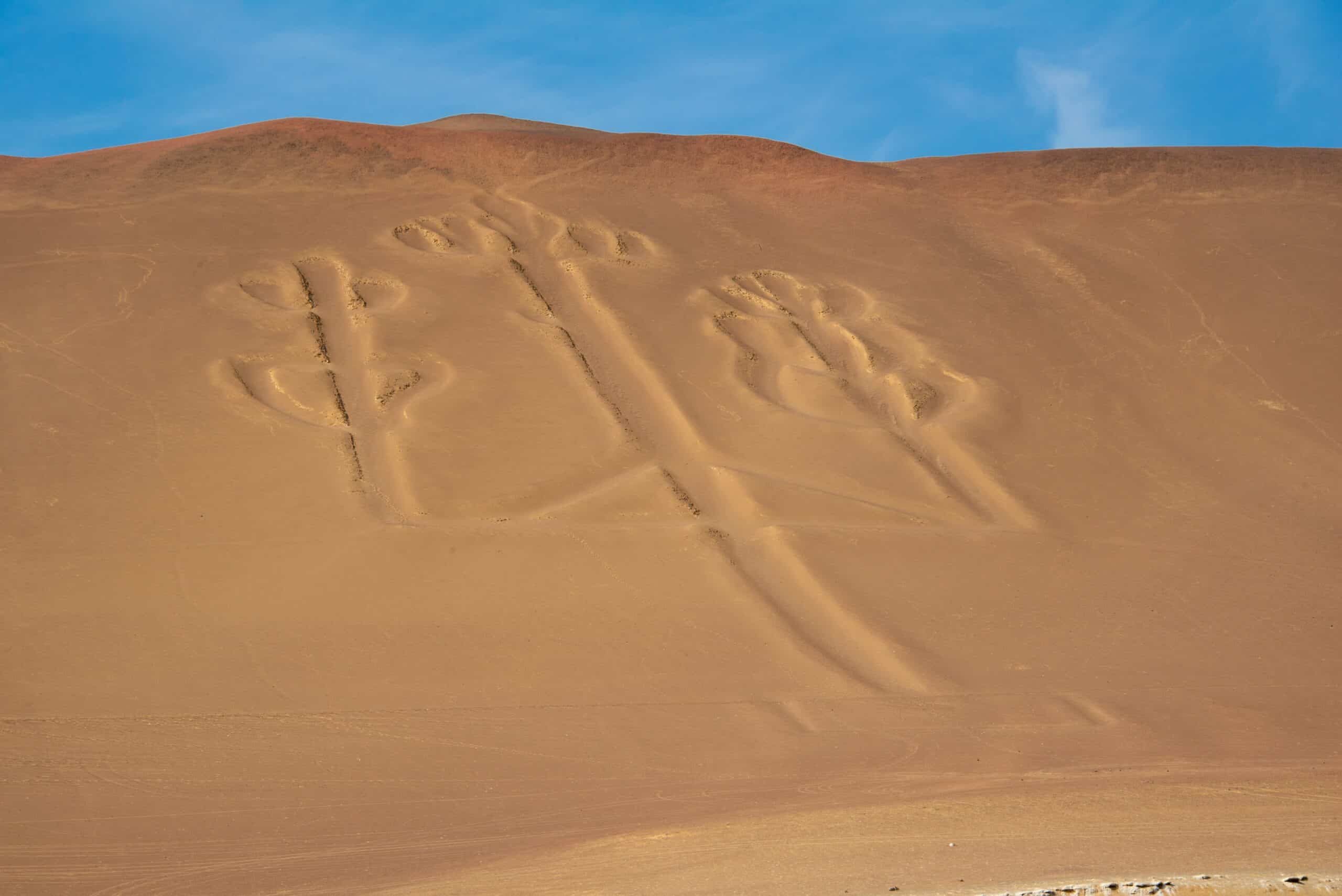
The Candelabra of the Andes is a massive geoglyph located on the northern face of the Paracas Peninsula in Peru, near the Nazca Lines. This mysterious figure, which resembles a three-pronged candelabrum, is etched into the sandy soil and is over 180 meters long. The purpose and origin of the geoglyph remain unknown, with some theories suggesting it was a navigational guide for sailors, while others believe it was a religious or ceremonial symbol. The geoglyph’s location on a hillside facing the Pacific Ocean has led to speculation that it may have been intended to be seen from the sea. The Candelabra of the Andes is a testament to the ingenuity of ancient cultures and their ability to create large-scale artworks that have withstood the test of time. Its mysterious origins and purpose continue to captivate researchers and visitors, making it one of the most enigmatic desert landscapes in the world.
This article originally appeared on Rarest.org.
More from Rarest.org

Exploring the world’s remote regions often reveals some of nature’s most exquisite secrets, including a variety of exotic butterflies. Read more. Read more.
13 Most Luxurious Private Jet Services

When it comes to luxury travel, few experiences can match the exclusivity and comfort of a private jet service. Read more.
7 Most High-End Pet Accessories on the Market

When it comes to pampering your pets, high-end accessories offer a perfect blend of luxury and functionality. Read more.
